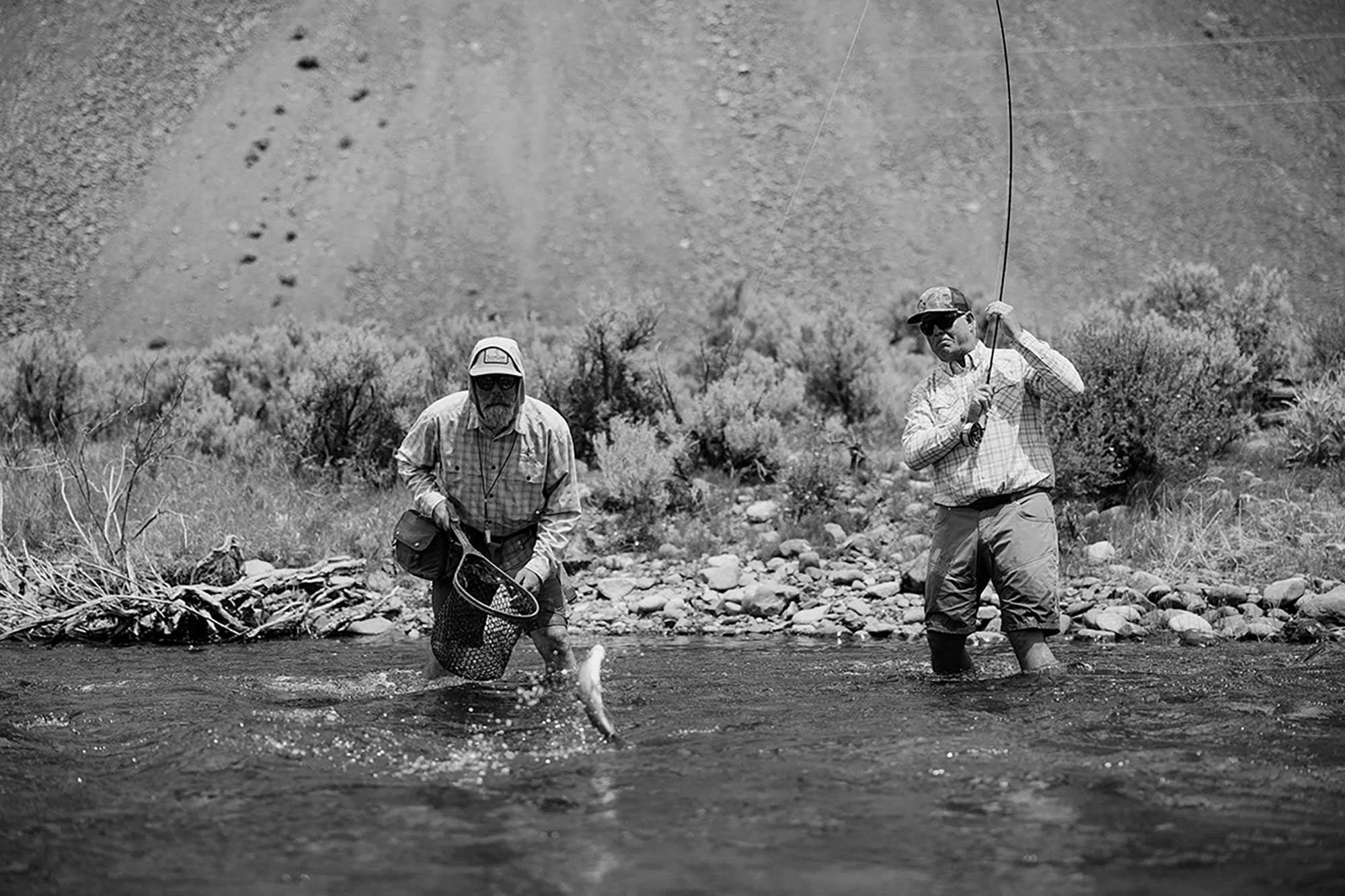Photo By: Sofia DeWolfie
“To see the miraculous in the ordinary is a more precious gift than prophecy.”
– Abraham Verghese
To the outside observer, the angler appears to rarely move. But in that ordinary act of stillness, the angler engages in the miraculous act of presence. No need for prophecy in the moment.
Silver Creek
It is Trico time on the Creek. As always, the timing and the duration of the hatch will vary. Typically, the spinners will hit the water when the air temps hit 60 to 65 degrees which is some time between 8 to 10 AM. The spinner fall can last anywhere from 30 minutes to an hour or more. Before the spinners come down, the fish will be looking for the occasional female Trico Dun, Callibaetis spinner, PMD spinner, or Baetis spinner. The fish can be very picky during this hatch and anglers need to have a variety of patterns to stay in the game. Also long, light leaders are a must. Once the hatch subsides, around 11:30 AM, most of the anglers will move on; however, the fishing can remain good throughout the day for those anglers willing to try a variety of techniques and flies. Often on warmer days, Blue Damsels will blanket the weed beds. Hoopers, ants, and beetles may get blown onto the water on windy days. And nymphing will always produce a fish or two.
The Big Wood
The flows are still a bit pushy south of town, but most all the river is open to strong waders and with the current air temperatures, the wet wading is refreshing. Fishing has been good in the mornings with plenty of Caddis, Grey Drakes, Rusty Spinners, Baetis, PMDs, and Pink Alberts around. Fish the margins of the fast water and buckets with small (16 and 14) parachute patterns or caddis imitation. Try dry dropper rigs in the shallow riffles at the head of the runs to find fish as well.
Big Lost below Mackay
At 400 CFS strong waders can move about; that said, it is still very high and difficult to cross. There are good morning hatches consisting of a mix of PMDs, Beatis, Craneflies, and a few Tricos. Nymphing remains the most productive with a variety of different small nymphs.
Upper Big Lost
The Upper Lost is getting low: however, the lower flows have opened up more water on the main stem. Big drys will turn fish, but if you get a refusal, switch to a smaller, more imitative pattern. If that does not work, small nymphs may work as well. As always, success comes to those who cover a lot of water.
Salmon
The fishing on the Upper and Lower Salmon remains solid. There are fair numbers of Golden Stones and Yellow Sallies in the morning and the Spruce Moths are making an appearance as well. Whether you decide to float or hole hop in your vehicle, this is a great way to spend the day.
South Fork of the Boise
The Salmon flies are done; however, you should have plenty of big foam bugs for working the banks. The Pink Alberts have also begun. Be sure to have it in all its stages. Caddis remain a factor as well in the evenings and you should pack a good selection of Trailing Shuck Caddis and traditional Elk Hair Caddis in brown and olive sizes 18 to 14. Nymphing the riffles and seams with large stone fly imitations and caddis larva is productive.
Local Ponds
It is time to take the family to Lake Creek, Penny Lake, or Gaver’s Lagoon. All the ponds have been stocked and will receive regular stockings throughout the summer season.
Silver Creek: Caddies 16,14 | Baetis. 20-24 | Tricos 22-24 | Callibaetis 16 | Terrestrials | Damsels | Zebra Midge in black, red, or olive | Small Pheasant Tails | Streamers
Big Lost: Caddis 18-14 | PMD 16 | Golden Stoneflies | Midge | Rubber Legged Stones | King Prince | Streamers
Salmon: Chubby Chernobyl | Rubber Legged Stones | King Prince | Streamers
South Fork of the Boise: Salmon Flies | Caddis | Baetis | PMDs | Midge | Rubber Legged Stones | King Prince | Streamers
| Silver Creek | 117 cfs |
| Big Wood | 207 cfs |
| The Lost Below Mackay | 406 cfs |
| Salmon | 632 cfs |
| South Fork of the Boise | 1610 cfs |




